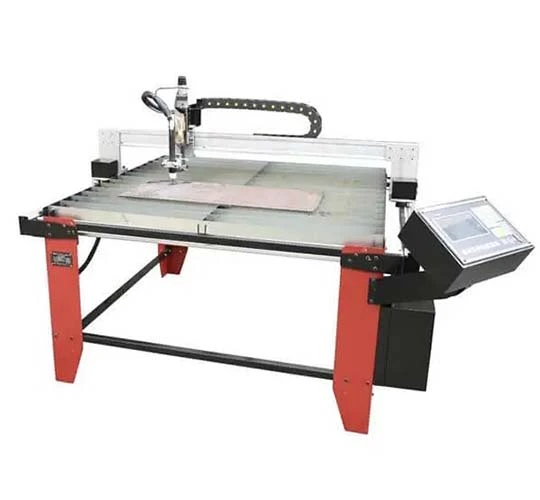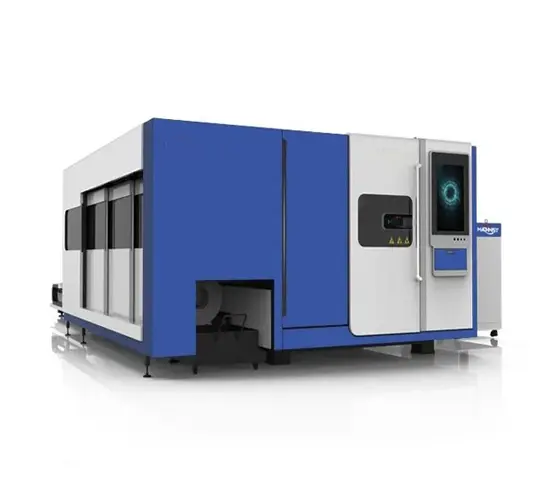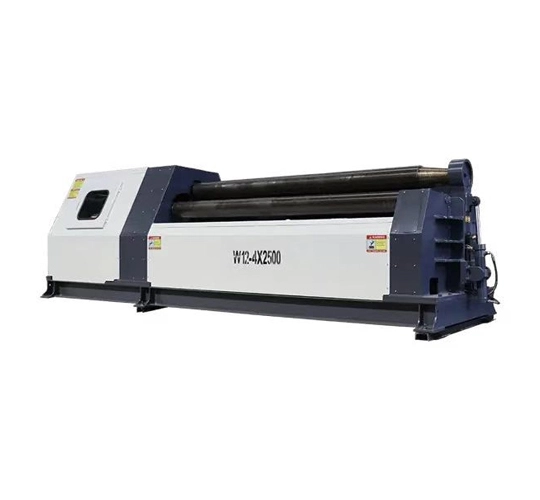Ironworker machine is a multifunctional machine tool mainly used for cutting, punching and forming operations in metalworking. It combines multiple functions and is able to process various metal materials such as steel, aluminum, stainless steel, etc. Ironworker machines are widely used in the metalworking industry due to its high efficiency, versatility and easy operation.
Compared with other manufacturing equipment, the ironworker can produce smoother cutting surfaces and holes. Although it is large and light due to its versatility and complex structure, the Ironworker is available in different sizes and capacities, ranging from 20 tons to more than 200 tons.
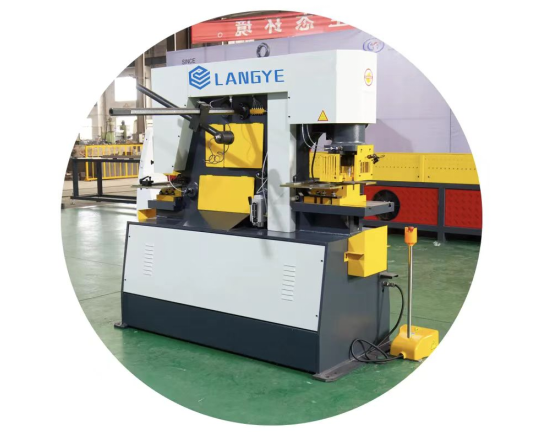
Ironworker machine main functions:
Cutting:
Metal sheets, bars and profiles of different thicknesses and shapes can be cut.
Common cutting methods include shearing (similar to scissors) and flame cutting.
Punching:
Quickly and accurately punch holes of various shapes in metal sheets or profiles.
Punching dies can be changed as needed to accommodate different hole sizes and shapes.
Forming:
Metal can be bent, embossed or otherwise formed.
Suitable for making metal brackets, frames or other structural parts.
Other functions:
Some Ironworker machines also have the functions of notching, beveling, flattening, etc., which further expands its application range.
Core components of the Ironworker machine:
Body:The sturdy steel structure ensures that the machine remains stable during high-pressure operations.
Hydraulic system:Provides powerful power to drive cutting, punching and forming operations.
Tools and dies:Replaceable tools and dies to adapt to different processing needs.
Clamping device:Used to fix the workpiece to ensure accuracy and safety during processing.
Control system:Manual, semi-automatic or fully automatic control system, simple and efficient operation.
Advantages of the Ironworker machine:
Versatility:One machine can complete multiple operations, reducing equipment investment and floor space.
High efficiency:Can quickly complete cutting, punching and forming tasks, improving production efficiency.
High precision:Adopt high-quality tools and dies to ensure processing accuracy.
Easy to operate:Simple design, easy operation, suitable for factories of all sizes.
Strong durability:Adopt high-strength materials and precision manufacturing process, long service life.
What is the Ironworker machine used for?
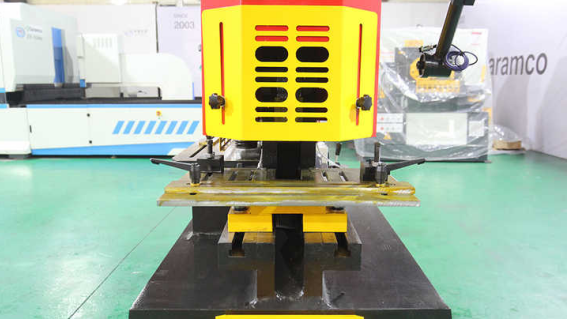
1. Cutting Metal
Ironworker machines can quickly and accurately cut metal materials of different thicknesses and shapes,
Metal sheets: such as steel plates, aluminum plates, etc.
Metal bars: such as round steel, square steel, flat steel, etc.
Profiles: such as angle steel, channel steel, I-beam, etc.
Shearing: Similar to the principle of scissors, suitable for straight-line cutting.
Flame cutting: Suitable for thicker metal materials.
2.Ironworker machines can punch holes of various shapes and sizes on metal sheets or profiles,
round holes, square holes, oblong holes, etc.
Suitable for making bolt holes, mounting holes or other functional holes.
Features:
High punching speed and high precision.
Replaceable molds to meet different hole diameter and shape requirements.
3.Ironworker machines can also form metals, such as:
Bending: bending metal sheets or profiles to a specific angle.
Embossing: pressing patterns or designs on the metal surface.
Flattening: To straighten bent or deformed metal.
4. Other functions
Some Ironworker machines also have the following functions:
Notching: To cut notches in metal materials.
Angle cutting: To make angle cuts on metal sheets or profiles.
Crimp: To connect metal parts.
Core advantages of Ironworker machines
Versatility:
One machine can complete multiple operations such as cutting, punching, and forming, saving equipment investment and space.
It can quickly complete metal processing tasks and significantly improve production efficiency.
Use high-quality tools and dies to ensure processing accuracy.
Humanized design, easy to learn and operate.
Strong durability:Adopt high-strength materials and precision manufacturing process, long service life.
What is the Ironworker machine used for?

The Ironworker machine is equipped with a slide with a cutting blade, which is opposite to a fixed blade. When the machine is started, the slide is pushed by a mechanical transmission device or a hydraulic system to move in a fixed direction. The cutting blade on the slide forms a shear force with the fixed blade. When the metal material is placed between the two blades, the metal material will be cut under the strong shear force, thereby realizing the shearing operation of metal plates, bars, etc., such as cutting long angle irons, square steels, etc. to the required length.
The machine has a movable punch. When punching is required, the operator places the metal material in the appropriate position and then activates the punch through the control system. The punch is driven by power, usually hydraulically or mechanically, and moves downward rapidly, acting on the metal material with a strong impact force, so that the metal material forms a hole at the position where the punch acts. Punches of different shapes and sizes can be replaced as needed to punch holes of various shapes and sizes in metal materials, such as punching round holes, square holes, etc. in steel plates for installing bolts or other connection operations.
The Ironworker machine has a pressing head or sliding arm. During the bending operation, the metal material is placed on a specific die, and then the pressure head or sliding arm applies pressure under the action of power to make the metal material surround a fixed point or enter the specific shape of the die, thereby achieving the bending of the metal. For example, bending a metal sheet into a certain angle, or bending a metal rod into an arc, etc.
The slotting operation has certain similarities with the principles of shearing and punching. For some Ironworker machines with slotting functions, there will be special slotting tools or dies. When working, through actions similar to shearing or punching, the tool or die removes a certain amount of metal on the surface of the metal material to form a notch, which is commonly square or V-shaped, etc., to meet specific process requirements.
How does the Ironworker machine work?
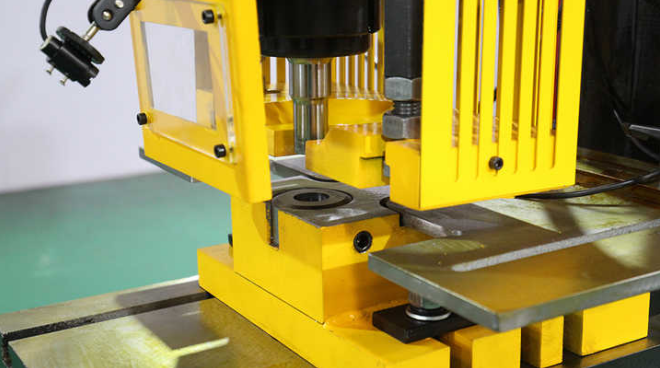
The hydraulic pump is driven by an electric motor to extract the hydraulic oil from the oil tank and pressurize it to form high-pressure oil. The high-pressure oil is transported to various hydraulic actuators, such as hydraulic cylinders or hydraulic motors, through oil pipes.
When shearing, the hydraulic system pushes the slide equipped with a cutting blade to generate a strong shear force between it and the fixed blade, thereby cutting the metal material. For example, in a metal processing workshop, steel plates with a thickness within the machine's capacity are cut to length.
When punching is required, the hydraulically driven punch moves downward quickly, acting on the metal material with a strong impact force to punch out holes. For example, punching holes on angle steel for mounting bolts.
When bending, the hydraulic system drives the pressure head or sliding arm to apply pressure to bend the metal material around a fixed point or into a specific mold. Like bending a metal strip into a certain arc for making a frame.
Iron and Steel Machinery Parts
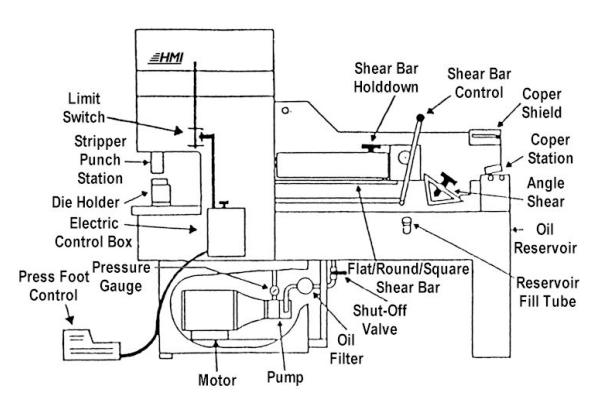
It is the power source of the hydraulic system, converting mechanical energy into hydraulic energy and providing pressure oil for various hydraulic actuators of ironwork machinery. Common ones include gear pumps, vane pumps, plunger pumps, etc.
Provide power for ironwork machinery, convert electrical energy into mechanical energy, and drive the operation of the machinery. There are different specifications such as power, speed and protection level to meet different work requirements.
Such as shearing dies, punching dies, bending dies, etc., which are key accessories for ironwork machinery to achieve different processing functions, and are designed and replaced according to different processing shapes and size requirements.
Seals: including sealing rings, oil seals, gaskets, etc., used to prevent leakage of hydraulic oil or compressed air, ensure the normal operation of hydraulic and pneumatic systems, and improve the efficiency and reliability of the system.
Filters: used to filter impurities and contaminants in hydraulic oil or compressed air, protect hydraulic and pneumatic components from wear and damage, and extend the service life of components.
The control devices of ironwork machines include control levers, control buttons and foot pedals. Other functions, such as CNC measuring devices, hydraulic cooling systems, custom tools, light curtains and protective fences, can also be included on Ironworker.
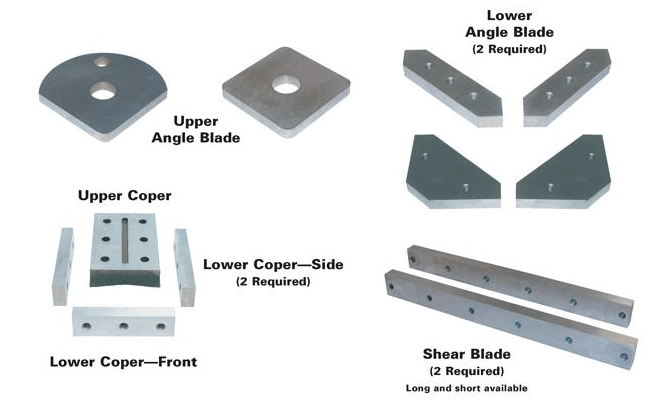
In Conclusion
Ironworkers are versatile, flexible, and efficient machines that can be found in fabrication, manufacturing, and maintenance shops. They are capable of shearing flats, notching, and punching holes in steel sheets and angle irons. If you are in the market for the best ironworkers for sale, consider our products at LANGYE.
As a manufacturer of sheet metal processing equipment, we offer a wide range of machines including press brakes, fiber laser cutters, shears, and ironworkers.
 English
English






